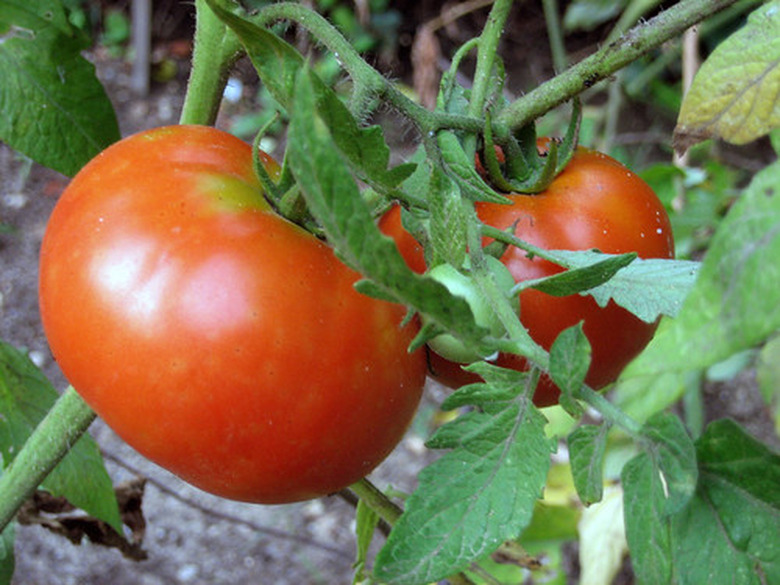Why Don't My Tomato Plants Have Blooms?
Tomato plants belong to the nightshade family of plants. The vines produce flowers and are usually self-pollinated. The flowers grow into tomatoes and contain seeds for the next generation. There are a few reasons tomato plants won't flower. Determining why is usually simple, and getting them to produce flowers and fruit is usually straight forward.
Season Length
Certain varieties of tomatoes take up to 120 days to produce ripe fruit from the time the seedlings are planted. This four-month growing season begins when the plants are six to 10 inches tall. If the growing season is not long enough, the plants won't have time to flower and produce fruit. If the plant does not reach maturity early enough, it will not flower.
- Tomato plants belong to the nightshade family of plants.
- The flowers grow into tomatoes and contain seeds for the next generation.
Too Hot
Tomatoes love warm weather for growing. Long hot days followed by nights when the temperature does not drop below 80 degrees can cause blossom drop almost as soon as the flowers appear. Because the plant is stressed from the heat, it discards its flowers to preserve energy and survive the stressful period of high heat.
Too Much Fertilizer
Applying too much fertilizer or a fertilizer with a high ratio of nitrogen causes lush, green leaves and excessive bushy growth. The plant is growing so well it lacks the need to produce seed. Tomato plants should be fertilized sparingly two weeks after planting and again mid-season with a low-nitrogen fertilizer or composted manure.
Drought
Plants suffering from drought may lack the energy required for producing flowers, seeds and fruit. The plant does not flower, preserving energy and resources until the drought ends and sufficient water and nutrients provide the energy required for fruiting. Water the tomato vines at the base of the plant, allowing partial drying of the soil. Avoid watering the leaves, as doing so encourages fungal disease.
- Tomatoes love warm weather for growing.
- The plant does not flower, preserving energy and resources until the drought ends and sufficient water and nutrients provide the energy required for fruiting.
Large Transplants
Many garden centers sell large, potted tomato vines that often have flowers and small tomatoes on them already. These plants have been forced into flowering too early and the plants have no reserves, taking longer to recover from transplant shock. When using large tomato transplants such as these, remove all the flowers and small tomatoes before planting them.
Solutions
A healthy plant without stress can be encouraged to flower through moderate stress. Grasp the vines near the base and tug up. You don't want to uproot them, but put some stress on the roots. Insert a spade about eight inches back from the base and slightly lift the root ball. Be sure your plants are supported before doing this. If heat is a problem, shade the plants during a portion of the day.
- Many garden centers sell large, potted tomato vines that often have flowers and small tomatoes on them already.
- When using large tomato transplants such as these, remove all the flowers and small tomatoes before planting them.
References
- 100 Heirloom Tomatoes for the American Garden; Dr. Carolyn Male PhD; 1999
